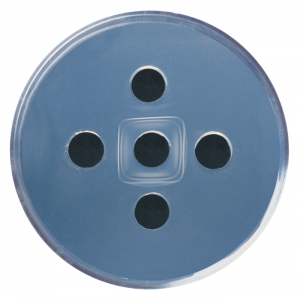4. IMMUNOLOGY
VIRUS QUANTIFICATION
The objective of this experiment is to introduce students to virus quantification using the plate culture technique.
Students will gain a basic understanding of the biology and use of plate culture to determine viral load and how to detect and onitor a patient.
> Kit includes:
Bactobeads, Virobeads, Ready Pour agar. COLORTP agar, PBS, luria broth, conical tubes, screw-cap conical tubes, snap-top microcentrifuge tubes, sterile loops, petriplates and sterile pipettes.
> You need:
37º C incubation oven, water bath, automatic micropipettes with tips, pipet pump, aluminiun foil and laboratory glassware.
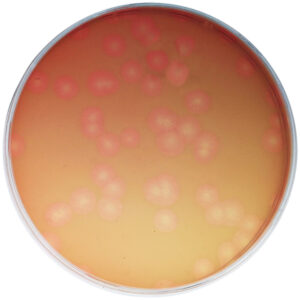
USE OF CRISPR TO TREAT CYSTIC FIBROSIS
In this experiment, students will simulate the use of CRISPR-Cas9 to attack a genetic mutation found in a patient with cystic fibrosis.
Students will develop an understanding of guide RNA (gRNA) design and use agarose gel electrophoresis to examine DNA samples prepared after CRISPR treatment.
> Kit includes:
DNA sample, gRNA samples, agarose, electrophoresis buffer and FlasBlue DNA stain.
> You need:
Distilled water, microware (or hotplate, burner), balance, pipet pump, DNA visualizatioon system, horizontal gel electrophoresis apparatus, D.C. power supply, automatic micropipettes with tips and laboratory glassware.
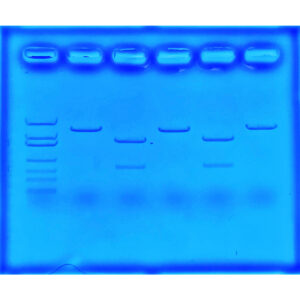
INTRODUCTION TO ELISA REACTION
Your students will learn the basic principles of the Enzyme-linked Immunosorbent Assay (ELISA) in this precise and sensitive antibody-based detection kit.
Experiment components do not contain human serum.
> Kit includes:
Antigens, primary and secondary antibodies, peroxide co-substrate, hydrogen peroxide, ABTS substrate, phosphate buffered saline, tubes, plates, and transfer pipettes.
> You need:
Distilled water, 37º C incubation oven, automatic micropipettes with tips and laboratory glassware.

SIMULATION OF HIV DETECTION BY ELISA
This experiment’s aim is to provide students the molecular biology and pathogenesis basics of acquired immunodeficiency syndrome (AIDS).
An HIV test detects HIV infection indirectly using an ELISA test against HIV antibodies in the blood. The test works by taking antibodies from the patient’s blood and adding them to a microtiter plate coated with HIV antigen. If HIV antibodies are present in the blood, they will bind to the antigens on the plate. This binding is detected with an enzyme-linked secondary antibody that causes a color change upon addition of substrate. In this experiment, students will perform an ELISA test by coating microtiter plate wells with simulated HIV antigen and then test simulated donor serum for anti-HIV antibodies.
> Kit includes:
Simulated HIV antigens, serum samples, antibodies, buffers, microtiter plates, assorted pipettes and microtest tubes.
> You need:
37ºC incubation oven, micropipettes with tips, pipette pumps, laboratory glassware, and distilled water.
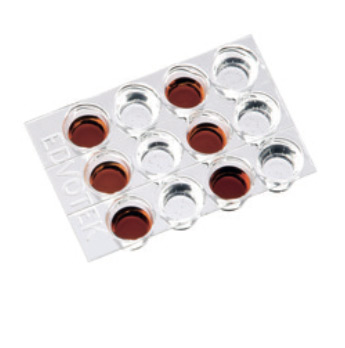
QUANTITATIVE ELISA
Antibodies are highly specific in their recognition of antigens. This ELISA experiment demonstrates the quantitation of varying concentrations of viral antigens as detected by the intensity of the color reaction due to the accumulation of products.
> Kit includes:
Antigens, primary and secondary antibodies, substrate solution, phosphate buffered saline, blocking agent, stop solution, tubes, plates, and transfer pipettes.
> You need:
Distilled water, 37º C incubation oven, micropipettes with tips, laboratory glassware.
 ELISA3
ELISA3
 6 groups of students
6 groups of students
Practice of the Quantitative Elisa Kit (ELISA3) carried out by Georgina Grané, Sergi Díaz, Aina García and Julia Poch, students of ESCOLA JOVIAT, and their professor Elisabet Calvet from the CFGS Clinical and Biomedical Laboratory course.
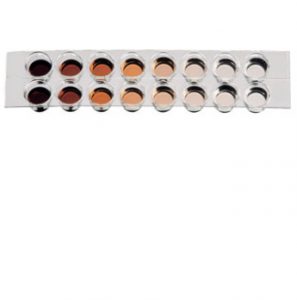
SIMULATION OF HIV DETECTION BY WESTERN BLOT
The second assay used to confirm a positive HIV ELISA result is the Western Blot. Students separate protein samples from hypothetical patients on agarose gels, transfer the samples to a membrane and detect the simulated HIV proteins. This kit is an introductory level experiment.
> Kit includes:
Samples, standard molecular weight markers, protein agarose, various buffers and reagents, PVDF membrane, filter paper, stain, 1 ml pipette, 100 ml graduated cylinder.
> You need:
Electrophoresis apparatus, power supply, micropipettes with tips, microwave, incubation oven, shaker platform, lab glassware, small plastic trays, microtest tubes, pipette pumps, metric rulers, distilled water, methanol, and glacial acetic acid.

WHAT’S IN MY LUNCH? QUANTITATIVE MILK ALLERGY ELISA
The second assay used to confirm a positive HIV ELISA result is the Western Blot. Students separate protein samples from hypothetical patients on agarose gels, transfer the samples to a membrane and detect the simulated HIV proteins. This kit is an introductory level experiment.
> Kit includes:
Dilution buffer, wash buffer, whey antigen, primary and secondary antibody, aminosalicylic acid, hydrogen peroxide, microtiter plates, microcentrifuge tubes, 15 and 50ml conic tubes and transfer pipettes.
> You need:
Various food samples, distilled water, flasks, paper towels, 37ºC incubator, disposables lab gloves, safety goggles, automatic micropipettes and tipes, digital camera (or cell phone with camera), computers with internet and image analysis program.
![]()
DETECTING THE SILENT KILLER: CLINICAL DIAGNOSIS OF DIABETES
Over 380 million people worldwide are afflicted by diabetes mellitus, a chronic disease thet leads to high blood sugar. Due to genetic predisposition and high-calorie, low-activity lifestyles, that number continues to grow. Without early detection and treatment of diabetes, sevre medical complications can occur. In this simulation, students Will diagnose diabetes in three patients using the urine gucose test and Enzyme-linked Immunosorbent Assay (ELISA).
> Kit includes:
Samples, antigens and antibodies, varios solutions and reagents, microtest tubes and pipets.
> You need:
Waterbath, distilled water, 37ºC incubation oven, disposables lab gloves, safety goggles, automatic micropipettes and tipes and laboratory glassware.
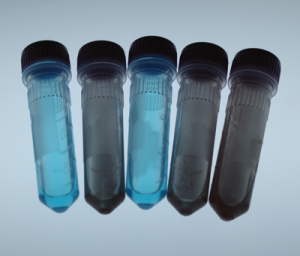
ALZHEIMER DETECTION WITH ELISA
The objetive of this experiment is to introduce students to the principles and practice of Enzyme-linked Immunosorbent Assay (ELISA) as a tool for detecting antigens present in the human body.
Students will acquire basic knowledge of brain biology and molecular biology and the ELISA technique.
> Kit includes:
ELISA wash buffer, ELISA dilution buffer, antigens and antibodies, TMB substrate, stop solution, transfer pipettes, strip tubes, plastic tubes and snap-top tubes.
> You need:
Distilled water, beakers or flasks, paper towers, disposables lab gloves, safety goggles, automatic micropipettes and tipes and laboratory glassware.
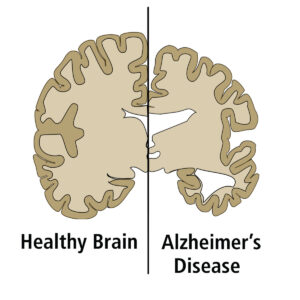
RADIAL IMMUNODIFFUSION
Radial Immunodiffusion quantitatively determines the level of an antigen. Antibody is incorporated into liquefied agar and allowed to gel. The antigen is added to small wells and radiates throughout the antibody-containing medium, leaving a precipitate throughout the gel. The amount of diffusion is quantified.
>Kit includes:
Antigen and antibody, petri plates, pipettes, well cutters, agarose, buffer and microtest tubes.
> You need:
Automatic micropipettes with tips, waterbath, microwave or hot plate, incubation oven, laboratory glassware, pipet pumps or bulbs, rulers, paper towels and distilled water.
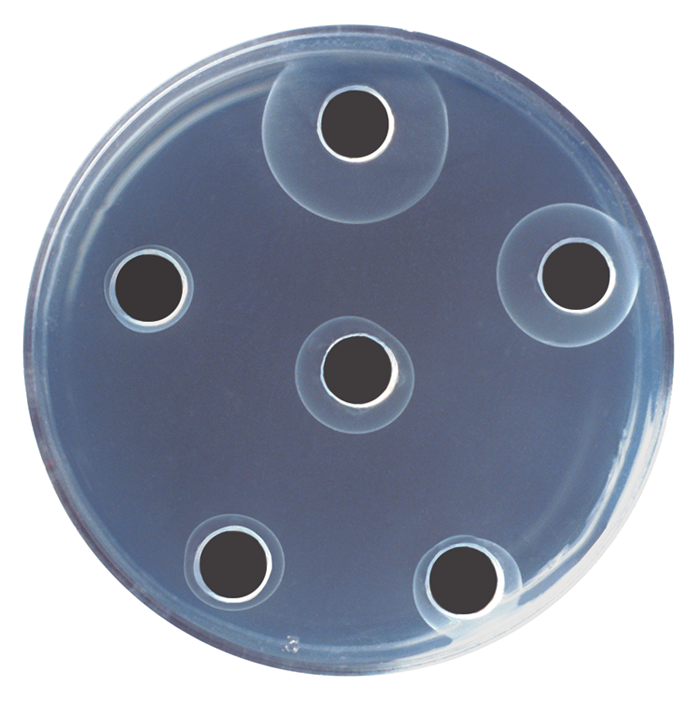
IMMUNOELECTROPHORESIS
Learn how Immunoelectrophoresis identifies proteins based on their combined electrophoretic and immunological properties. This method is useful to monitor antigen and antigen-antibody purity and to identify a single antigen a mixture of antigens. In this experiment, serum proteins are separated by agarose gel electrophoresis and the point of equivalence is observed by the antigen-antibody complex formation.
> Kit includes:
Proteins, antibodies, reagents, agarose, buffer, transfer pipettes, well cutters and paper wicks.
> You need:
Horizontal electrophoresis apparatus, power supply, automatic micropippetes with tips, microwave or hot plate, incubation oven, laboratory glassware, microscope slides, paper towels and distilled water.
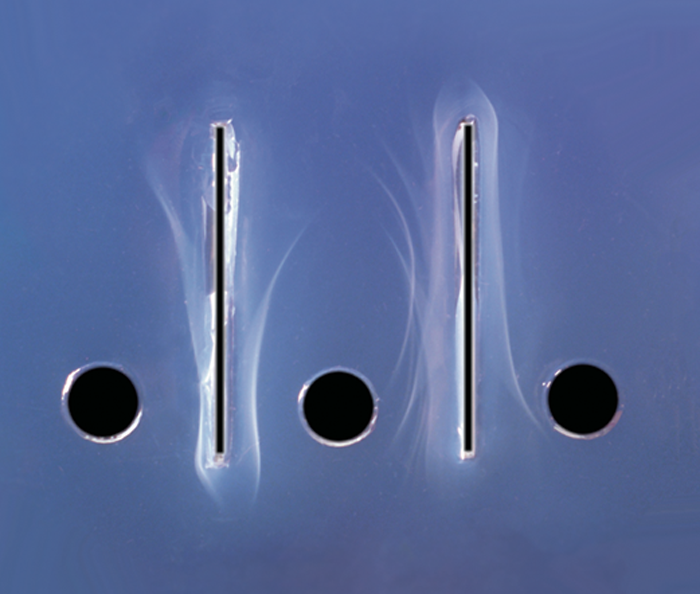
ANTIGEN-ANTIBODY INTERACTION: THE OUCHTERLONY PROCEDURE
Introduce your students to the principles of antigen-antibody interactions by using the Ouchterlony procedure. Antibodies and antigens form complexes that precipitate, making it posible to assay antibody-antigen systems. The binding interaction results in the formation of a white precipitate after diffusion in agarose.
> Kit includes:
Animal serum antigens and antibodies, practice gel loading solution, agarose, powdered buffer, transfer pipettes, Petri plates, well cutters and microtest tubes.
> You need:
Automatic micropippetes with tips, 5 or 10 ml pipets, 55ºC waterbath, measuring spatulas or toothpicks, microwave or hot plate, incubation oven (optional), laboratory glassware and distilled water.
